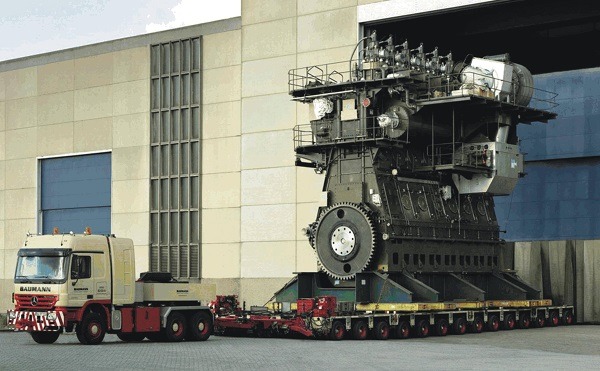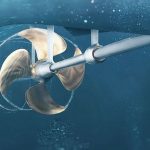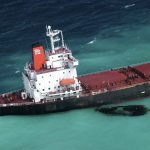Marine engines are the beating heart of massive ships, providing the power needed to transport goods, passengers, and military fleets across the world’s oceans. These engines must generate incredible amounts of power, operate efficiently for long durations, and withstand harsh marine environments.
In this article, we’ll explore the largest and most powerful marine engines ever built, their specifications, and how they drive the world’s biggest ships. 🚀🌊
1. Why Are Marine Engines So Powerful? 🤔🚢
Marine engines power cargo ships, oil tankers, cruise liners, and naval vessels, all of which require immense thrust to move through water efficiently.
📌 Key Features of Marine Engines:
✅ High Power Output – Capable of generating tens of thousands of horsepower.
✅ Massive Size – Some engines are as tall as a 4-story building.
✅ Efficiency & Reliability – Designed to operate continuously for weeks or months.
✅ Heavy Fuel Consumption – Runs on low-cost marine diesel or heavy fuel oil.
📍 Example: Super-sized container ships like the Emma Maersk need over 100,000 horsepower to move their massive cargo loads.
2. The Most Powerful Marine Engines Ever Built ⚙️🔥
Now, let’s explore the largest and most powerful marine engines used in ships today!
🔹 1. Wärtsilä-Sulzer RTA96-C (World’s Largest Engine) 🚢🏗️
✅ Power Output: 107,390 HP (80 MW)
✅ Height: 44 feet (13.5 m)
✅ Weight: 2,300 tons
✅ Fuel Consumption: 250 tons of heavy fuel oil per day
✅ Ship Type: Ultra-large container ships
📍 Example: Emma Maersk, one of the world’s biggest container ships, is powered by this engine.
📌 Why It’s Special?
- 14-cylinder 2-stroke diesel engine, the largest reciprocating engine ever built.
- Thermal efficiency of over 50%, making it one of the most fuel-efficient marine engines.
- Produces 5.6 million Nm of torque, enough to move a small city.
🔹 2. MAN B&W 11G95ME-C9.5 (Largest 2-Stroke Engine in Production) 🛳️⚡
✅ Power Output: 103,000 HP (76 MW)
✅ Number of Cylinders: 11
✅ Bore Diameter: 950 mm
✅ Stroke Length: 3,200 mm
✅ Ship Type: Ultra-large container ships (VLCSs)
📍 Example: HMM Algeciras, one of the world’s largest container ships, uses this engine.
📌 Why It’s Special?
- Uses electronic fuel injection (ME-C technology) to improve efficiency.
- Designed for mega cargo ships like the 24,000-TEU-class container vessels.
🔹 3. Rolls-Royce MT30 (Fastest Marine Gas Turbine) ⚡🛥️
✅ Power Output: 36,000 HP (27 MW) per unit
✅ Engine Type: Gas Turbine
✅ Efficiency: 40% (best for its class)
✅ Ship Type: Naval destroyers, aircraft carriers, fast ferries
📍 Example: Used in the UK Royal Navy’s Queen Elizabeth-class aircraft carriers and the US Navy’s Zumwalt-class destroyers.
📌 Why It’s Special?
- Based on the Rolls-Royce Trent 800 jet engine (used in Boeing 777).
- Can propel ships at speeds over 30 knots (56 km/h).
- Lightweight and compact, ideal for fast warships.
🔹 4. Wärtsilä 31 (Most Fuel-Efficient 4-Stroke Engine) 🔥⚙️
✅ Power Output: 4,500 – 13,000 HP (10 MW max)
✅ Efficiency: Up to 50% (highest for a 4-stroke engine)
✅ Fuel Types: Can run on diesel, LNG (Liquefied Natural Gas), or biofuels
✅ Ship Type: Cruise ships, ferries, offshore supply vessels
📍 Example: Used in modern LNG-powered ferries and coastal ships.
📌 Why It’s Special?
- Recognized by Guinness World Records as the world’s most efficient 4-stroke diesel engine.
- Multi-fuel capability allows cleaner emissions and compliance with IMO environmental regulations.
🔹 5. Zorya-Mashproekt DT-59 (Powering Hydrofoils & Warships) 🚤🔬
✅ Power Output: 52,000 HP (39 MW) per unit
✅ Engine Type: Marine Gas Turbine
✅ Ship Type: Russian & Ukrainian naval warships, hydrofoil ships
📍 Example: Used in high-speed naval ships like the Bora-class hovercraft destroyer.
📌 Why It’s Special?
- One of the most power-dense marine engines for military vessels.
- Can power high-speed hydrofoil and missile-equipped warships.
3. How These Engines Power Massive Ships ⚙️🚢
🔹 Container Ships & Oil Tankers – Use massive 2-stroke diesel engines for fuel efficiency and endurance.
🔹 Cruise Ships & Ferries – Use dual-fuel engines (LNG & diesel) for cleaner emissions.
🔹 Warships & Aircraft Carriers – Use gas turbines for high-speed performance.
🔹 Nuclear-Powered Ships (Submarines & Icebreakers) – Use nuclear reactors instead of conventional fuel.
📍 Example: The world’s largest cruise ship, Wonder of the Seas, uses Wärtsilä and ABB propulsion systems.
4. Future of Marine Engines: Greener & More Efficient 🌱🚀
With growing concerns over climate change and emissions, marine engines are evolving toward greener technologies:
🔹 LNG-Powered Engines – Reduce CO₂ emissions by up to 30% compared to diesel.
🔹 Hybrid & Electric Marine Propulsion – Batteries and hybrid systems power ferries and smaller ships.
🔹 Hydrogen & Ammonia-Powered Engines – Zero-emission solutions for the future.
🔹 AI & Digital Monitoring – Predictive maintenance improves efficiency and reduces fuel waste.
📍 Example: Maersk is developing ammonia-powered ships to meet future carbon regulations.
5. Conclusion 🏆🚢
The world’s most powerful marine engines are true engineering marvels, delivering massive horsepower and fuel efficiency to keep global trade and transportation running smoothly. As technology advances, the future of marine propulsion will focus on cleaner, more efficient power sources, ensuring sustainability for the next generation of ships.
🚀 Want to explore more? Try visiting a shipping port or a maritime museum to see real marine engines up close!


